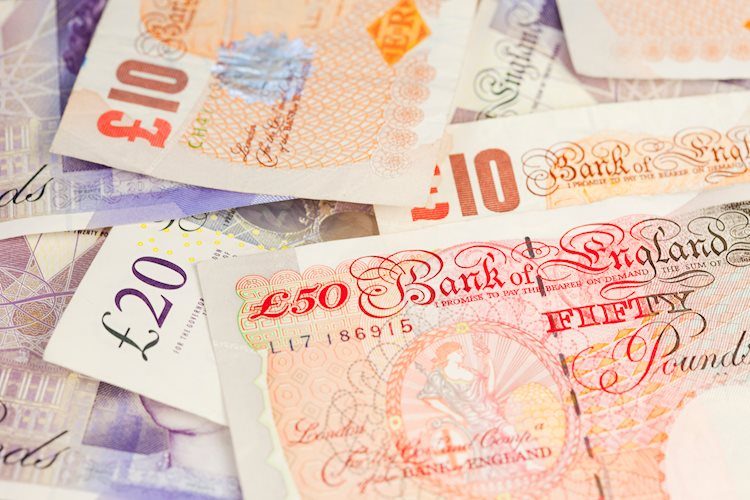
- The Pound Sterling extended its correction from seven-month highs against the US Dollar.
- Dovish BoE vote split spelt doom for GBP/USD buyers, despite a dovish Fed outlook.
- GBP/USD confirmed a bearish channel on the daily chart, while the RSI points to more weakness.
The Pound Sterling (GBP) failed to hold its upswing against the US Dollar (USD), as the GBP/USD correction from seven-month highs of 1.2894 regained traction in the central banks’ bonanza week.
The policy outlooks announced by the US Federal Reserve and the Bank of England (BoE) remained the key drivers for the GBP/USD price action in the past week. But the selling momentum around the Pound Sterling was unabated, as the US Dollar kept its bullish tone intact, despite a brief pullback midweek.
In the early part of the week, markets sensed caution in the lead-up to the key central banks’ monetary policy announcements and preferred to hold onto the US Dollar amid mounting tension. The Bank of Japan’s (BoJ) first interest rate hike on Tuesday was widely expected and triggered a “sell the fact” reaction in the Japanese Yen, lifting the USD/JPY pair. That had a positive “rub-off” effect on the US Dollar, lifting the Greenback against most of its major pairs.
Subsequently, GBP/USD fell as low as 1.2668 before rebounding sharply toward 1.2800 on Wednesday after the Fed’s economic projections, the so-called Dot Plot chart, still predicted three rate cuts this year as seen in December. Markets had begun pricing two Fed rate cuts this year after two consecutive months of higher inflation readings. The median Fed dot plot for 2024 was unchanged despite a 0.2% increase in the median 2024 Core PCE inflation. This was perceived as dovish by markets, throwing the Greenback under the bus.
However, the tide turned against the Pound Sterling on Thursday after the BoE’s no-rate change decision. In an unexpected move, two BoE policymakers – Jonathan Haskel and Catherine Mann –, who previously voted for hikes, opted to keep rates unchanged with one dissenter (Swati Dhingra) continuing to favor a rate cut. The dovish turn in the vote split spelt doom for the British Pound, smashing GBP/USD to two-week lows at 1.2650.
The downside in the pair extended on Friday, as sellers rushed toward the 1.2600 threshold amid a sustained recovery in the US Dollar, following the dovish Fed aftermath. Therefore, GBP/USD mired in multi-week troughs just above the 1.2600 level notwithstanding the better-than-expected results of the UK’s February Retail Sales report. The UK Retail Sales showed no growth over the month in February vs. -0.3% expected and 3.6% registered in January, according to the latest data published by the Office for National Statistics (ONS) on Friday. The Core Retail Sales, stripping the auto motor fuel sales, rose 0.2% MoM vs. -0.1% expected and 3.4% in January.
Following an event-packed week, Pound Sterling traders will breathe a sigh of relief in the holiday-shortened week ahead.
It’s Holy Friday and most major markets will remain closed, leaving minimal volatility and thin liquidity around the GBP/USD pair.
During the week, there are no top-tier economic data from the UK but the US calendar will feature Durable Goods Orders on Tuesday.
Thursday will see the releases of the US final Q4 Gross Domestic Product (GDP), Pending Home Sales and the weekly Jobless Claims.
Amidst light trading on Good Friday, the US Core Personal Consumption Expenditures (PCE) Price Index data will stand out.
Meanwhile, the return of the Fed speakers and the BoE’s Financial Stability Report (FSR) will also grab some attention.
As observed on the daily chart, GBP/USD breached the rising channel support at 1.2680 on a daily closing basis on Thursday, confirming a Bearish Channel.
The next critical support level is seen at the horizontal 200-day Simple Moving Average (SMA) at 1.2592. A weekly closing below that level is needed to extend the corrective decline.
Sellers will then target the mid-February low near 1.2540, followed by the 1.2500 round figure. If the selling pressure intensifies on a break below the latter, a test of the 1.2400 mark cannot be ruled out.
The 14-day Relative Strength Index (RSI) points south below the midline, suggesting that there is more scope for the GBP/USD downside.
If buyers manage to defend the 1.2540 support area, a decent comeback toward the channel-support-turned resistance at 1.2680 could be in the offing. However, at that level the 50-day SMA coincides, making it a stiff resistance.
Further up, the pair could run into offers at the 21-day SMA at 1.2722. A sustained move above it will challenge the weekly top at 1.2803.

